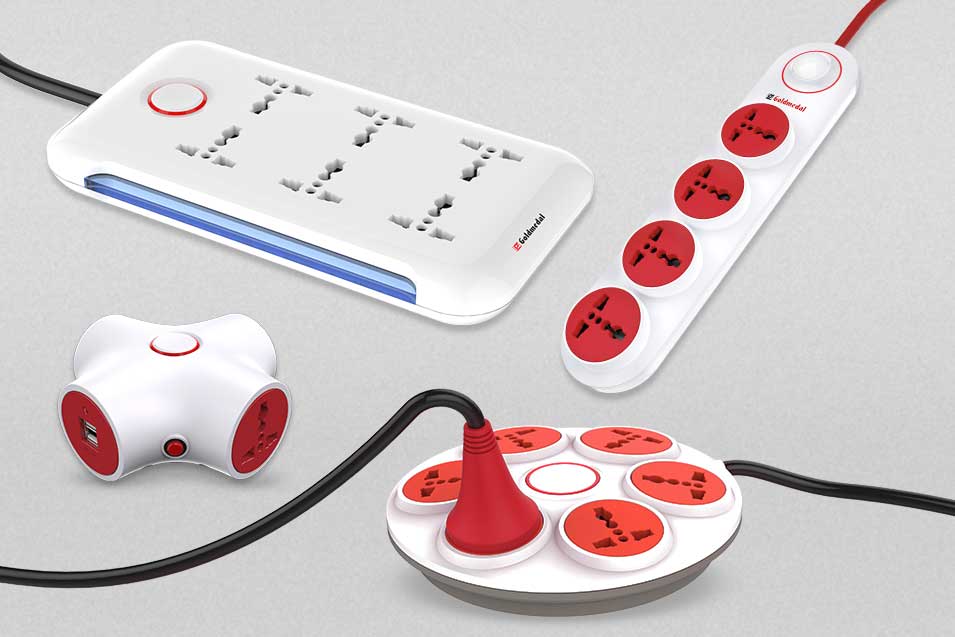
What is a Spike Guard? How is it different from Spike Buster and Power Strip?
Modern-day life is indispensable without electronic gadgets and appliances. This also means that you need multiple power points or sockets, especially in compact spaces. If the space has frequent power fluctuations, then you also require installing a surge protector device to manage it.
When you look for solutions to address these issues, you will get options such as spike guards, spike busters, and power strips. Let’s understand more about all these three devices to help you make an informed decision.
1. Spike Guard
A spike guard is designed to prevent voltage spikes, instability, and fluctuations. Power fluctuations could occur due to faulty wiring, lightning strike, thunder, storm, or issues from power suppliers.
A spike guard safeguards your refrigerator, television, washing machine, microwave, air conditioner, water heater, computer, and other electronic devices. It prevents damage against overloading and short circuits. It also improves the life span of the devices by reducing their repair and replacement cost.
You can buy a spike guard extension board which can absorb fluctuations and also plug in several electronic devices at a time.
2. Spike Buster
Spike buster meaning is hardly different from a spike guard. A spike buster also protects your electronic equipment against voltage spikes. However, the power handling capacity may vary between both.
Hence, the choice between a spike guard and a spike buster will depend on the voltage intensity and overload protection you are seeking for your space.
3. Power Strip
A power strip has multiple electrical sockets to plug your devices within proximity. It also comes with a cable on one end that powers the devices from a single socket or outlet in the wall of your space. For example, you can use it to plug a computer, router, and printer together.
A downside of power strips is that it can overheat or overload the gadgets plugged into them in case of any electrical mishap. Moreover, a power strip may not have a surge protection feature.
Tips to Make the Right Choice
- Purpose:- Determine whether you need multiple sockets, protection against fluctuation, or both benefits.
- Types of Devices:- Assess the combination of devices you will plug in the spike guard, spike buster, or power strip. For example, audio and video equipment in your home entertainment system are a safe combination but an air conditioner and a water heater might not work well together.
- Absorption Rating:- Find out the amount of power the spike guard, spike buster, or power strip withstands in a surge.
- Clamping Voltage:- Be familiar with the voltage at which the spike guard, spike buster, or power strip will get activated.
- Compatibility:- Check if the spike guard, spike buster, or power strip is compatible with different wall outlets or if it would need an adapter or a converter.
- Number of Sockets:- Determine the number of electronic devices you need to plug in at the same time.
- Value-Added Features:- Check if the spike guard, spike buster, or power strip has individual switches, extra cable length, USB, LED, in-built fuse, indicator, warranty, or other add-on features.
Conclusion
A spike guard is a better and safer option than a spike buster and power strip to shield your electronic devices. However, the choice eventually depends on various factors. It is advisable to seek professional consultation from an electrical solution provider for the best results.
Frequently Asked Questions (FAQs) :
Q1. Are spike guards safe?
Yes. Spike guards are designed to absorb voltage surges and fluctuations and keep your devices safe.
Q2. Do surge protectors protect against power spikes?
Yes. Surge protectors can protect your equipment against power spikes caused by electrical storms and lightning strikes.
Q3. How strong is a surge protector?
The strength and performance of a surge protector depends on Joules which ranges from 500 to 3000. The higher the Joules, the stronger the ability of a surge protector to protect your equipment. So, the more expensive, precious, or important your device is, the more Joules you will need.
Q4. Do surge protectors work with AC?
Yes. You can use surge protectors to protect your AC against power surges. However, it is advisable to seek professional consultation to choose the right surge protector.
Q5. How long do surge protectors last?
The lifespan of a surge protector is usually 3 to 5 years. However, it also depends on the usage. The more the usage, the less the lifespan.
The Joules are also a determinant of its lifespan. For example, a 2000 Joules surge protector will stop working as soon as it takes a 2000 Joules hit.

